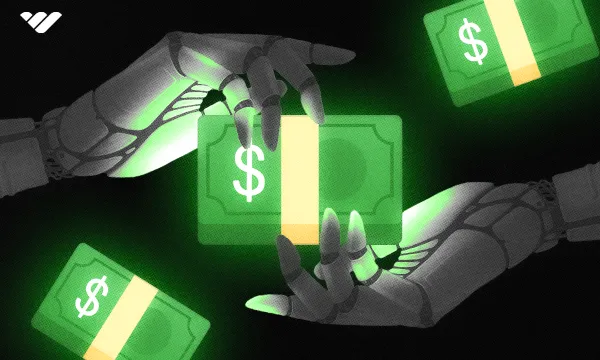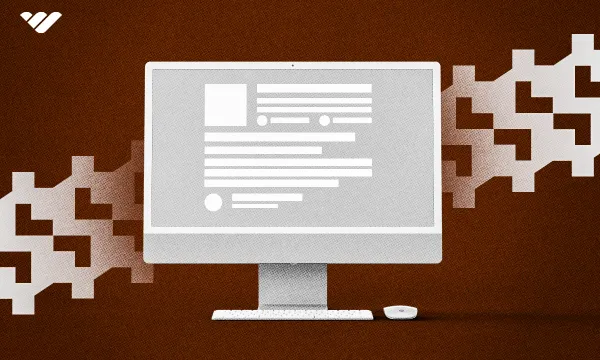AI has been one of the biggest technological revelations of the last couple of years, and it’s showing no signs of slowing down. While the dangers of AI going unchecked are much talked about, and indeed the current iteration of the technology displays major challenges especially in the area of intellectual property protection, there’s no arguing that it’s an area of infinite opportunity.
Many early adopters of AI have already started unlocking these opportunities, so it’s about time you started to do the same. But how can you use AI to generate revenue, and what kinds of business models can AI allow you to take advantage of? Read on to find out!
Wondering How to Make Money with AI? Side Hustles are the Answer!
We need to acknowledge that one of the best and certainly most reliable ways to make money with AI is to actually work in the field full-time, and given that it’s such a high-potential area the salaries on offer can be mouth-watering. That being said, you don’t need to fret if you’re not a developer or software engineer because some AI side hustles can be even more lucrative!
Entrepreneurs the world over who have taken the time to understand the applications of AI are putting it to use, leveraging the power of AI and harnessing its ability to get tasks done quickly and efficiently. True creativity remains the province of humans, so all you need is an idea and an understanding of how to get AI to execute on your behalf, developing revenue streams in minutes that would otherwise take you weeks to build from scratch.
10 AI Side Hustle Ideas
So, what are some examples of side hustles that AI can help you create and then monetize? Let’s dive right in.
1. Prompt Engineering
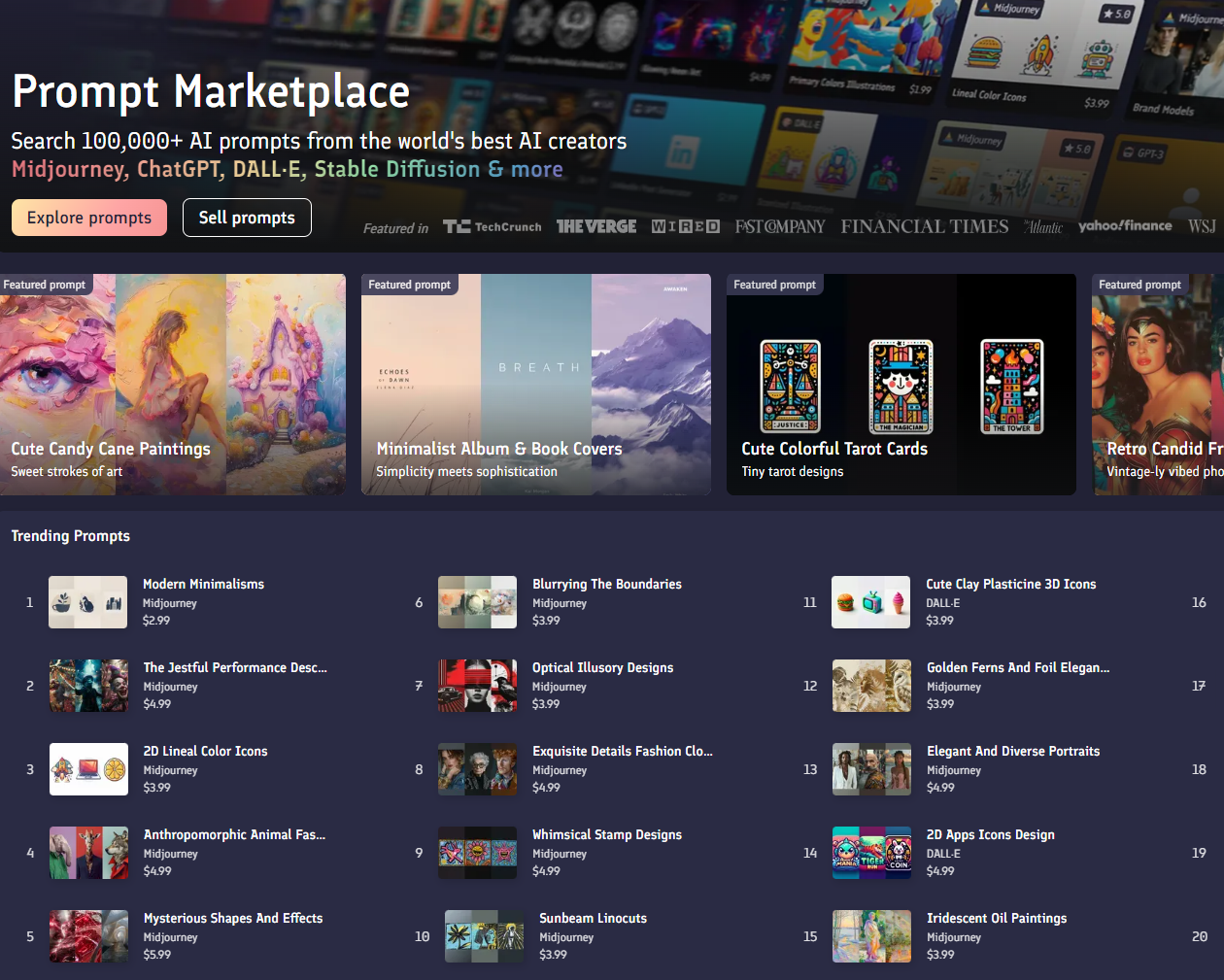
Using generative AI tools is all about learning how the program responds to prompts, and getting the most out of popular tools like ChatGPT and Midjourney is purely a matter of creating the right prompts. As you may imagine, making AI dance to your tune can take some research as well as trial and error, but once you’re able to master the art of prompting AI, you’ve got a skill that’s suddenly very much in demand.
With your new-found expertise in prompt engineering, you can either look to monetize your prompts on prompt marketplaces or sell your skills to companies turning to AI on a full time or freelance basis. It’s arguable that prompt engineering might not be a gig with really long-term prospects, but you can definitely make money in the short term, and you’ll have a leg up on the competition in terms of understanding the sort of inputs that AI tools work best with.
Tools Needed: Generative AI such as ChatGPT, Stable Diffusion, DALL-E and Midjourney
Monetization: Sell prompts on marketplaces or freelance for software firms
2. AI Services
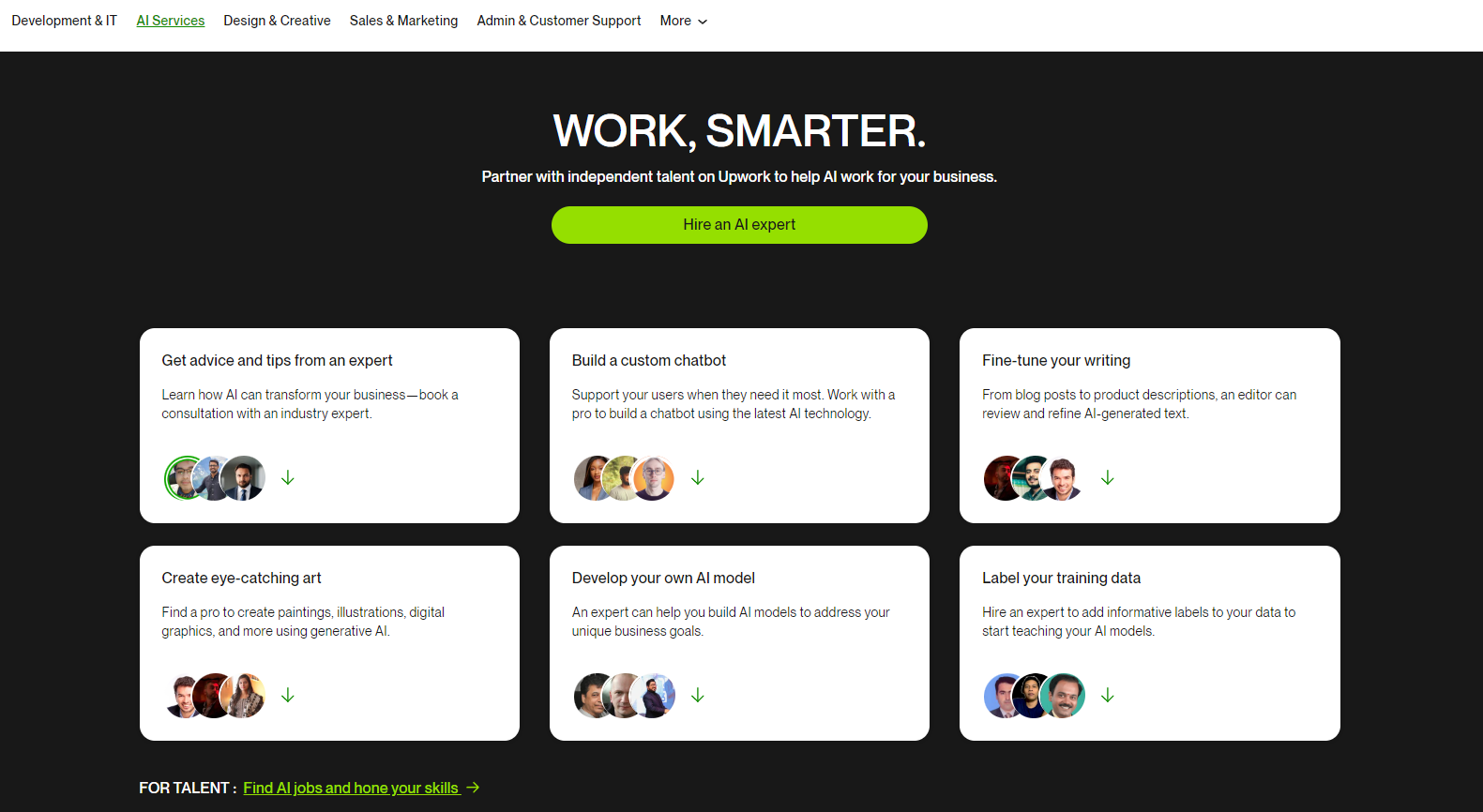
If you know your way around AI, you can take things a step further from prompt engineering and use AI to perform various services. Not every business can afford an in-house AI expert, so you’ll find that a lot of companies are heading to freelancer and gig sites to look for people to fulfill services using AI for them.
While AI can’t actually replace an employee in the majority of cases (more on that in a moment), it can help to take over certain tasks and automate tasks that are more effort than brainpower. For instance, AI can take on content editing very well since it just has to follow certain rules, and if you’re able to harness different plug-ins and utilities you’ll find that you can offer some pretty advanced services on AI.
For example, you could use a tool like ChatGPT with different plugins and its Code Interpreter mode to do calculations and process spreadsheets as input and input. If that sounds like ChatGPT could automate a lot of middle management jobs, well, you might be right—and it could be a service you choose to offer.
AI services are really hot right now, and freelancing marketplace Upwork features it as one of its top 4 gig categories.
Tools Needed: You’ll need a deep understanding of AI utilities such as ChatGPT
Monetization: List your services on digital marketplaces or freelancing sites
3. Print on Demand
Print on Demand (POD) is an extremely popular online business model, and it can be very profitable if done right. One of the main challenges with POD is creating designs that will sell, which is why a lot of the POD businesses you’ll see out there are tied to an established name or message—for example, your favorite influencer probably sells their own merch via POD, and people buy it because it carries that influencer’s brand or message.
Another way to do this is by employing AI in the design process. It’s hard to go wrong here since all your generative AI has to do is come up with some attractive graphics for the printable you choose. Whether that’s the cover for a journal, an image for a tee shirt or a couple of choice words for a mug, AI can help you come up with a few mock designs that you can take through to your suppliers.
Tools Needed: Generative AI tools like Midjourney to design prints, ChatGPT for slogans. You can also use AI-powered design software like Vexels if you want a premium option and more POD-specific functionality
Monetization: List your products on online ecommerce sites
4. Digital Printables
If you like the idea of creating prints using AI but don’t want to set up the supply chain and fulfillment required for a business model like POD, you could choose to sell digital printables instead. These are simply digital products that customers can purchase and then print for themselves.
The work required to make this happen is therefore far less on your behalf, and all you’ll really need to make sure of is that the printing process works fine on the customer end. Besides that it’s a matter of marketing and promotion, and making sure that you can find your audience. Influencers and big personalities have an edge here since they already have an audience ready to go, but some effective consumer research should see you on your way.
The number and types of products you can sell as digital printables may also surprise you. From static objects like calendars and wall art to interactive, useful items like coloring books for children and adults alike, AI can help you get them all mocked up in a flash. Once you have them ready to go, you can sell them on your own website or on an ecommerce platform specializing in digital products like Whop.
Tools Needed: AI tools like Midjourney and ChatGPT
Monetization: List your printable products on a digital marketplace like Whop where your customers can purchase and download them with ease
5. 3D Modeling
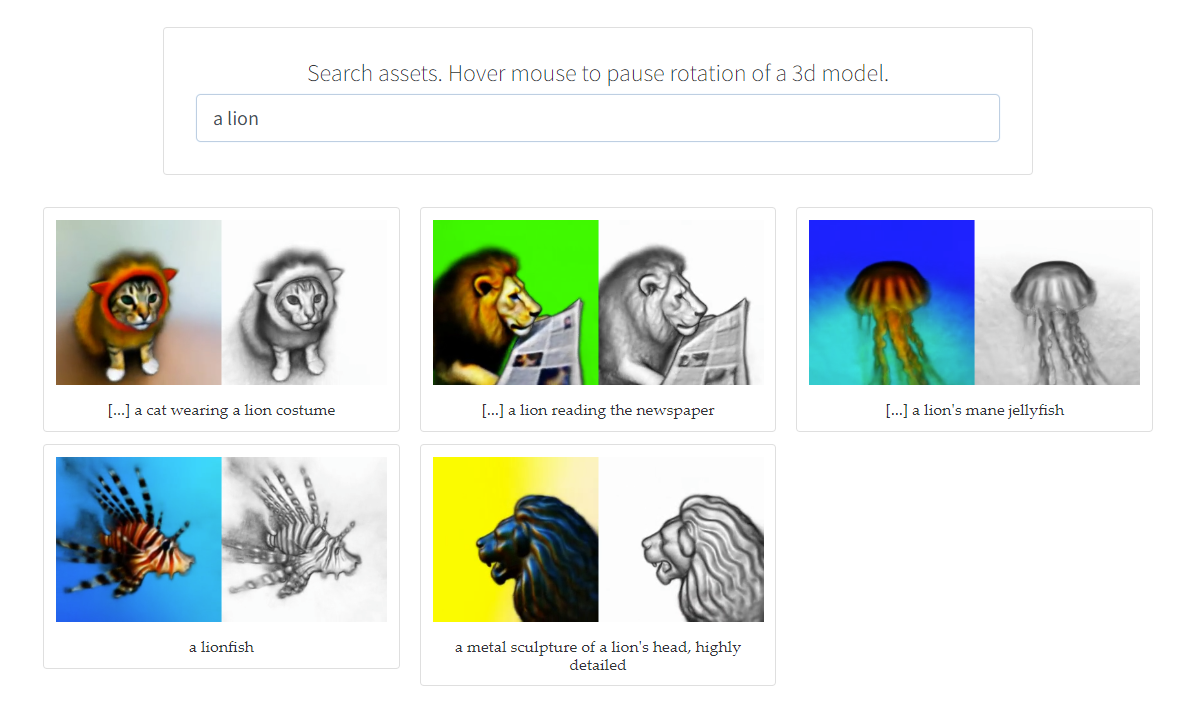
Staying with the use of AI to aid in design, you can also turn different AI tools toward 3D modeling via a text prompt. This is a big one, since 3D design is rarified air when it comes to difficulty—not too many people have the skills and expertise required to do this, let alone produce the quantity of designs you may need to turn it into a viable business or side hustle.
What you actually do with the 3D models is up to you. Tabletop gaming miniatures could be a profitable area if you’re aware of what you can and can’t do from a licensing perspective, and you could set yourself up to design and print pieces for up-and-coming board game designers.
Text to 3D is still an emerging area, and Dreamfusion is one of the best options out there currently. It’s still in development, but as the technology matures you’ll be able to do more and more with it!
Tools Needed: Text to 3D AI tools like Dreamfusion
Monetization: Either create bespoke 3D designs as a freelancer or set up your own 3D printing business
6. Sell AI Courses
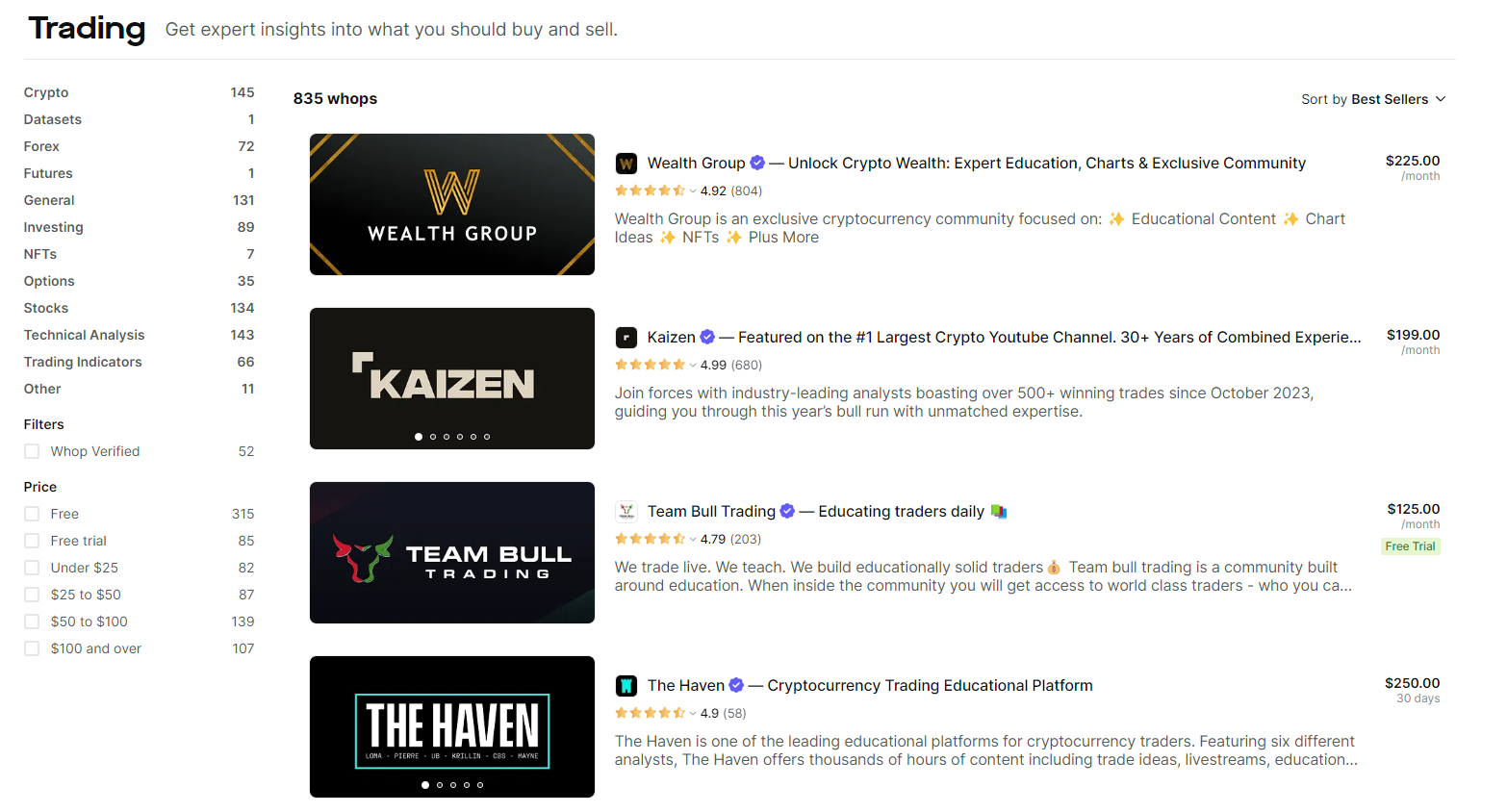
There are two side-hustles here—first of all, you can teach courses in AI once you develop the skills to actually make a side hustle out of any of the previous ideas. Once you gain this sort of understanding of AI and prompt creation, you’ll find that plenty of people out there are hungry to learn those same skills. Why not transfer your knowledge on to them, for a price?
Secondly, you can also enlist AI to aid you in actually creating courses. Regardless of what the subject matter is, certain AI tools can help you structure and edit your course, while others can help with touching up and graphics. You can also get simple animations and text-to-speech done for small instructional videos via AI, meaning that your actual workload is reduced and your courses pay a whole lot more compared to how much they cost to build.
Tools Needed: ChatGPT for brainstorming and course structure, Midjourney for design and Descript to create videos
Monetization: Sell your courses on digital marketplaces like Whop
7. Resume Writing
If you’ve ever been a job seeker or studied the job market, you’ll know that most companies employ programs to screen and filter out resumes that don’t fit certain criteria, or in some cases just don’t contain the right keyword. The situation isn’t terribly fair on job seekers, some of whom just don’t know how to work the system, and most of whom spend an inordinate amount of time and money on applications just to have them thrown out without reaching human eyes.
So, why not step in and use your AI superpowers to help? There are specialized AI tools like Novoresume that’ll do the job, but even good ‘ol ChatGPT can be given a job listing and a candidate’s basic resume as inputs, and spit out a tailored resume as an output in a matter of seconds.
The more advanced AI tools will also use the right templates and formats for the task, ensuring that the resume readers used by hiring firms can process everything properly—yes, that’s right, some job seekers even lose out because they put key text in the wrong column.
You can now offer your AI-powered resume-writing services on any online gig platform or freelancer marketplace and expect to charge up to three figures a pop, depending on the sort of jobs people are looking at.
Tools Needed: ChatGPT for basic resume generation, tools like Novoresume if you want to take it to the next level
Monetization: Sell your resume writing and optimization services on freelancer marketplaces
8. Stock Images
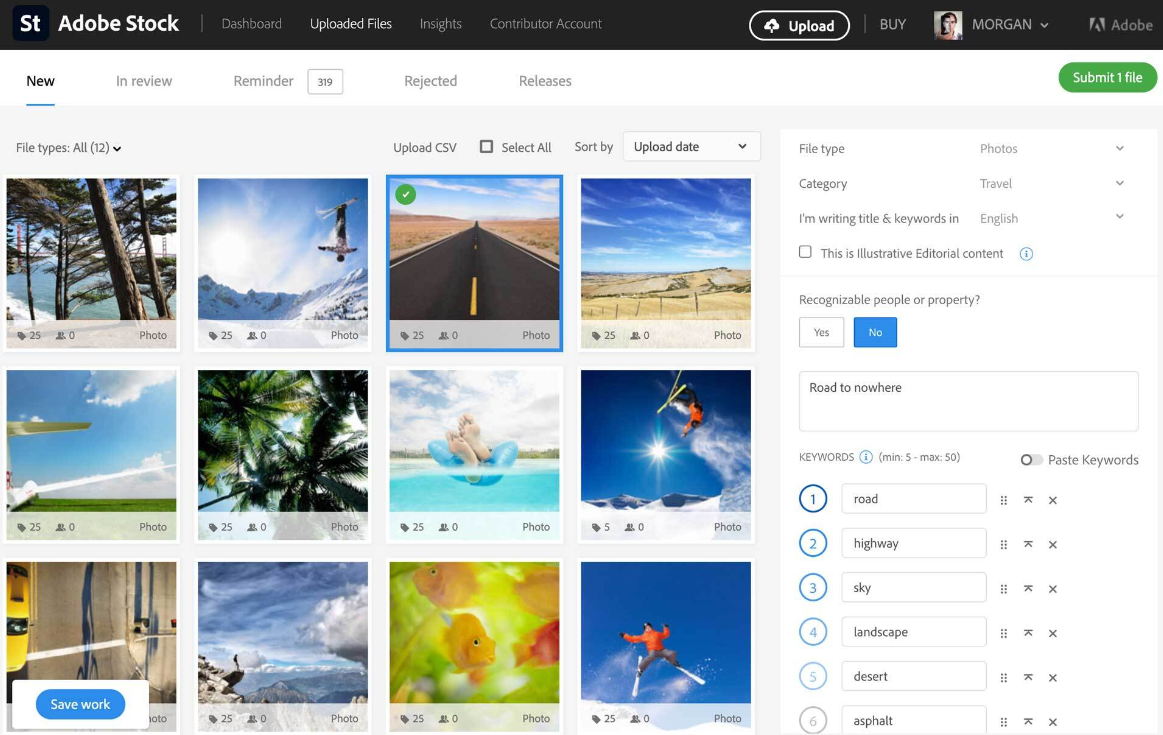
Stock images have usually been the province of both professional and enthusiast photographers, but some stock image repositories and websites have started opening their doors to AI-generated content.
It’s worth remembering that by selling AI-generated art on a platform like this you’re opening yourself up to liability if you cross certain boundaries, so it’s wise to stay clear of copying other work—one of the issues with AI is its ability to imitate the style of an artists if you input that into the prompt, so just stay clear of that and you’ll be fine.
When selling stock AI art, the understanding is clear on all sides that it’s AI generated, so don’t expect to sell pieces for lots of money. It’s going to be a matter of quantity rather than quality since the only real expenditure of effort is typing in a prompt. That said, you can do various things to increase your chances of scoring sales, such as researching the platform’s recent best sellers.
Tools Needed: Image generators like DALL-E and Midjourney, with the latter being most creators’ tool of choice
Monetization: Sell your stock AI generations on platforms like Adobe Stock which allow AI-generated art. Some platforms, including Adobe Stock, also have their own image generators
9. Content Marketing
If you’ve already got another revenue stream or side hustle, such as content creation or ecommerce, it’s probable that you already have a website. Now, one of the best ways to grow a business is through content marketing, and since it’s your own business, you can leverage as much AI as you want to generate content for that brand.
That said, while it is certainly possible to generate entire blog posts and even videos using various AI tools, you may not see perfect results if you rely solely on AI. Google has a policy of rewarding high-quality content, ranking content that demonstrates expertise, experience, authority and trustworthiness highly—and purely AI generated content will demonstrate none of these.
So, you can use AI to generate structures for your web pages or blog posts, and even drop in lots of information before you go in and edit it, lending the content your own voice. Or do things the other way around, drafting all of the content before AI takes over the editing. Let AI save you time, but don’t rely on it to do everything for you if you want the best results.
Tools Needed: Text generation tools such as ChatGPT and Jasper
Monetization: Indirectly boost your revenue via content marketing, and gain more sales from your site by ranking higher in search.
10. Faceless YouTube Videos
We covered some of the caveats of this in the previous idea, and the concept holds—any sort of content creation you do with AI should have your voice, lest it probably isn’t going to do too well. That being said, there are certain popular forms of content that some creators are leaving completely to AI and profiting from.
Faceless YouTube channels, for example, are surprisingly prevalent. It’s possible to deploy a cocktail of AI tools toward this—let Jasper write the script, then feed that into Fliki or Lumen5 to get a video that you can tweak. In fact, there are lots of AI tools that perform the various functions you would need, to the point that you have to do almost no work through the entire process, and can earn money on YouTube by uploading these videos consistently.
We’re not denying that this could be a solid side hustle, but the content generated in this manner tends to be much ado about nothing—the actual value added is close to nil, and you’ll have to work extra hard to monetize the sort of audience you’ll gain if in fact you do manage to attract a following with this sort of content.
There’s also the clear and present risk that YouTube adopts policies akin to its parent company and cracks down on this sort of content, and in the longer term, you might open yourself up to liability in the future thanks to how AI generates content—OpenAI is already in court for allegedly stealing copyrighted works, and the regulatory future around the industry is likely to change fast.
So, whatever sort of content you’d like to create, by all means let AI help you—you can create cover art for your eBook with Midjourney, edit your videos with Descript, and use ChatGPT to brainstorm content, but do keep ethics and regulations in mind as you go.
Tools Needed: Jasper can help you create scripts and structure stories, ChatGPT is great for brainstorming, Synthesia can add voice to text you write, InVideo can suggest stock video for your script, and Descript makes editing easy.
Monetization: Generate platform revenue with services like TikTok and YouTube, and monetize your community through further side hustles as well as subscriptions and memberships with Whop
Looking for More Ways to Make Money? Check out Whop!
There are tons of ways to make money on the internet, and AI is adding another leg to the game by giving you tools to work with, letting you do things you couldn’t before as well as opening up brand new opportunities that didn’t exist previously. To learn more about how you can make life easier and unlock some of these learning opportunities, remember to check out Whop—there are some fantastic educators on the marketplace ready to share even more ideas or help you flesh out your own into a money-making side hustle.
And once you’re ready to sell your thing, list it on Whop! Whether you’re looking to monetize the community of your AI-enhanced YouTube channel, sell eBooks, courses, or digital printable, Whop offers the digital fulfillment infrastructure and all requisite services you need to rock your new business.
